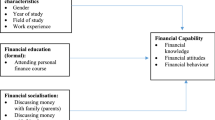Abstract
This article examines the ways in which the increasingly market-based higher education (HE) landscape of UK HE is shaping students’ attitudes and responses towards their HE. Contemporary HE policy has framed HE as a private good that generates largely private benefits. There has also been a concern that these changes will distort institutional relations and the traditional value of participating in HE, reinforcing the growing commodification of UK HE. On the basis of a qualitative study with students in a range of higher education institutions from the four UK countries, it outlines the main impacts recent policy is having on students’ attitudes and relationship to HE. Dominant market-driven discourses around investment, consumerism, employability and competition indicate widespread concerns among contemporary HE students about operating in higher-stakes markets, which are intensified by increased personal financial contribution towards HE. While the data reveal an identification with the student as ‘consumer’ and strigent expectations over what HE provides, it also points to an ethic of self-responsibility that is built on highly individualised discourses of personal application, proactivity and experience optimisation. Goal-driven and instrumental learning are evident, which relate to widespread concerns about future returns and the private good value of HE.
Similar content being viewed by others
Notes
A small group of research-intensive universities, with slightly lower league-table rankings and entry requirements than Russell Group universities.
Modern universities that were previously polytechnics. They are largely teaching-based although some have a clear research profile, and also contain a more mixed profile of student and subject areas.
A group of member universities which often specialise in non-traditional subjects and are predominately teaching institutions. They often have lower entry requirements than post-1992 HEIs and are committed to widening participation.
References
Blacker, D.J. (2013) The Falling Rate of Learning and the Neoliberal Endgame, Winchester and Washington DC: Zero Books.
Brennan, J., Edmunds, R., Houston, M., Jary, D., Lebeau, Y., Osborne, M. and Richardson, J.T.E. (2010) Improving what is Learnt at University, London: Routledge.
Brown, R. (ed.) (2011) Higher Education and the Market, London: Routledge.
Collini, S. (2012) What Are Universities For? London: Penguin.
Department for Education and Skills (2003) The Future of Higher Education, London: HMSO.
Department for Business, Innovation and Skills (2011) Higher Education: Students are the Heart of the System, London: HMSO.
Dill, D.D. (1997) ‘Higher education markets and public policy’, Higher Education Policy 10 (3): 167–185.
Higher Education Funding Council for England (2013) Impact of 2012 Reforms, Bristol: HEFCE.
Hirsch, F. (1976) Social Limits to Growth, Cambridge, MA: Harvard University Press.
Khan, P. (2014) ‘Theorising student engagement in higher education’, British Educational Research Journal 40 (6): 1005–1018.
Kivinen, O. and Ahola, S. (1999) ‘Higher education as human risk capital’, Higher Education 38 (2): 191–208.
Lauder, H., Brown, P. and Tholen, G. (2012) ‘The Global Auction Model, Skills Bias Theory and Graduate Incomes’, in H. Lauder (ed.) Educating for the Knowledge Economy? London: Routledge, pp. 43–65.
Lomas, L. (2007) ‘Are students customers? perceptions of academic staff’, Quality in Higher Education 13 (1): 31–44.
Marginson, S. and van der Wende, M. (2007) ‘To rank or to be ranked: the impact of global rankings in higher education’, Journal of Studies in International Education 11 (3/4): 306–329.
Marginson, S. (2011) ‘Higher education and the public good’, Higher Education Quarterly 65 (4): 411–433.
McCulloch, A. (2009) ‘The student as co-producer: learning from public administration and the student-university relationship’, Studies in Higher Education 34 (2): 171–183.
Molesworth, M., Scullion, R. and Nixon, E. (2010) The Marketisation of Higher Education and the Student a Consumer, London: Routledge.
Naidoo, R and Jamieson, I. (2005) ‘Empowering participants or corroding learning: towards a research agenda on the impact of student consumerism in higher education’, Journal of Education Policy 20 (3): 267–281.
Naidoo, R., Shankar, A. and Veer, E. (2011) ‘The consumerist turn in higher education: policy aspirations and outcomes’, Journal of Marketing Management 27 (11–12): 1142–1162.
Office for Independent Adjudicators (2012) (for Students in HE) Annual Report, OIA: Reading.
Reay, D., Ball, S.J. and David, M. (2006) Degree of Choice: Class, Gender and Race in Higher Education, Stoke: Trentham Books.
Scott, P. (2014) ‘Failing tuition fees systems won’t be fixed by tinkering’, The Guardian, 1 April.
Tight, M. (2013) ‘Students: customers, clients or pawns?’ Higher Education Policy 23 (3): 291–307.
Trow, M. (2006) ‘Reflections on the transition from elite to mass to universal access: forms and phases of higher education in modern societies since WWII’, International Handbook of Higher Education 18 (1): 243–280.
Weimer, D.L. and Vining, A.R. (1992) Policy Analysis: Concepts and Practice, Englewood Cliffs, NJ: Prentice-Hall.
Williams, J. (2012) Consuming Higher Education, London: Bloomsbury.
Acknowledgements
I would like to thank the two anonymous reviewers for their detailed and constructive comments on an earlier draft.
Author information
Authors and Affiliations
Rights and permissions
About this article
Cite this article
Tomlinson, M. The Impact of Market-Driven Higher Education on Student-University Relations: Investing, Consuming and Competing. High Educ Policy 29, 149–166 (2016). https://doi.org/10.1057/hep.2015.17
Published:
Issue Date:
DOI: https://doi.org/10.1057/hep.2015.17




